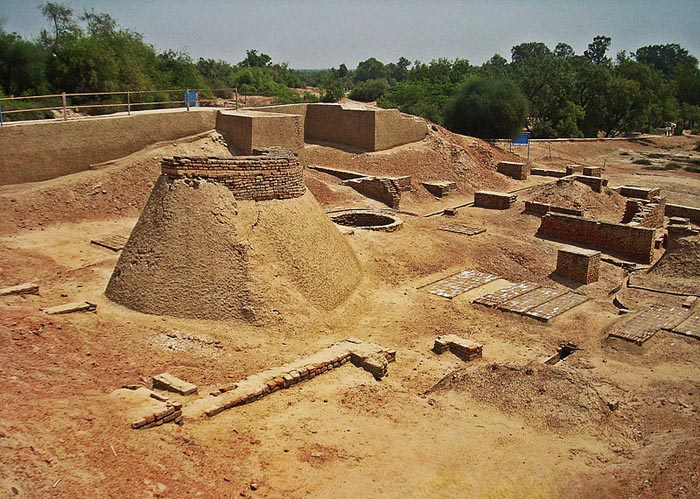Harappa Ruins

Information on Harappa Ruins (Kutch, Gujarat) - History & Architecture
Harappa Ruins are the very old ancients sites of Indus Valley Civilization found in the western parts of Indian. It is a well know lessons in the Indian educational system that everyone have studied in their History subject. This is a great historic place to visit in Gujarat. It is located in the Bhachau Village of Kutch District of Gujarat State in India. The fort is important as its historical as well as it provides a great evidence of the history that has helped over the years to re-created and enlighten the world about the era gone by. The place is truly important from every sphere as one get to know about how Harappan Civilization ended and how things were at that time. Yet many have been found out and still many to be found and proposed.
Harappa Ruins Architecture
Harappa Ruins are found in the mid of medieval period by the Solanki Dynasty in Gujarat. But the entire excavation works were taken in the 20th century only. Still there are many areas here are to be explored for hidden valleys near to the rivers. The ruins of this civilization are spread across 54 acres of plain land areas near a fertile river land. Its dimensions are 771 meters in length and 617 meters in width. It building materials are fond in clay bricks and stones. There are many evidence of terracotta clays used here. This civilization knows to make the baked bricks. These are still strong and not ruined even the present times. The city is well planned with a central citadel as its main city or the place of feudal lords. It is sub divided in to two other parts as the middle and the lower town areas. These are well designed and built with road, walls, drainages and a very good housing complexes with bathing and washing places. The housing complexes are built in a well planned manner. Each house is placed on the road side with its entrance facing towards the road and there is a drainage trenches built on the back side of these houses. There are many water reservoirs built here, even though they existed on a perennial river basin. This shows they were built to use this storage water in times of scarcity. It does have two storm water channels in this city. The entire city is found in a geometrical patter. This is a special engineered work of those times. There was building up to two stories here. There are also underground rooms found here as storage places. These ancient ruins have all the essence of the present municipal town.
Harappa Ruins History
Harappa Ruins are the 30 present of ancient land masses found in India of the once flourished great civilization of mankind known as the Indus Valley Civilization. It is estimated to flourish here from 2650 BC to 1450 BC in the parts of present Afghanistan, Pakistan and The Indian western regions. It came to notice in the medieval Era only. But left this site as unexplored by the Kings of those times. In 1920 only its original excavation took place under the British India rule. After the India independence the Archeological survey of India under took its excavation activities and uncovers its entire areas. They also build a museum near by it to keep all those valuable materials, and sculptors safely here for display to public. Here from small house hold articles to a human skeletal are kept. The Indian government has declared it as an ancient heritage site and a protected monument of India under the archeological department head. This is a great place for historic tour now.
Harappa Ruins Tourism Importance
Harappa Ruins are the evidence of a great advanced civilization flourished in India. The Dholavira site is where one can find a model of well planned city. Nearby this site a government museum is there, where you can finds its arts and crafts used by the Harappan's. This is the best place for students and history buffs. This land was the main root for the present peoples living in India.
- Andaman Nicobar Monuments
- Andhra Pradesh Monuments
- Assam Monuments
- Bihar Monuments
- Chhattisgarh Monuments
- New Delhi Monuments
- Goa Monuments
- Gujarat Monuments
- Haryana Monuments
- Himachal Pradesh Monuments
- Jammu and Kashmir Monuments
- Karnataka Monuments
- Kerala Monuments
- Madhya Pradesh Monuments
- Maharashtra Monuments
- Odisha Monuments
- Punjab Monuments
- Rajasthan Monuments
- Tamil Nadu Monuments
- Telangana Monuments
- Uttar Pradesh Monuments
- West Bengal Monuments